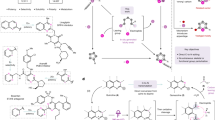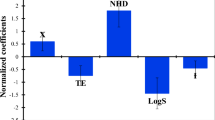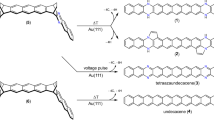Abstract
THE work of Barlow and Ing and of Paton and Zaimis, recently reviewed by Paton1, has established that the distance separating a pair of quaternary nitrogen atoms corresponding to optimal paralysing activity for mammals approximates to that occupied by the decamethylene chain. The present work was undertaken with the object of investigating the effect of varying the groups attached to a pair of quaternary nitrogen atoms, separated by a decamethylene chain, upon paralysing and associated activity. In modifying the groups attached to these quaternary nitrogen atoms, we aimed at simulating various chemical features of the tubocurarine molecule.
This is a preview of subscription content, access via your institution
Access options
Subscribe to this journal
Receive 51 print issues and online access
$199.00 per year
only $3.90 per issue
Buy this article
- Purchase on SpringerLink
- Instant access to full article PDF
Prices may be subject to local taxes which are calculated during checkout
Similar content being viewed by others
Author information
Authors and Affiliations
Rights and permissions
About this article
Cite this article
COLLIER, H., TAYLOR, E. Paralysing Activity of Some Heterocyclic Decamethylene-xω-bis Quaternary Ammonium Salts. Nature 164, 491–492 (1949). https://doi.org/10.1038/164491b0
Issue date:
DOI: https://doi.org/10.1038/164491b0
This article is cited by
-
Synthesis and pharmacological properties of bispiperidines (review)
Pharmaceutical Chemistry Journal (1983)
-
A New Compound Active Against Trypanosoma Congolense and T. Vivax
Nature (1957)
-
Synthetic bisQuaternary Salts Related to d-Tubocurarine
Nature (1950)
-
Paralysing Activity of some Further Heterocyclic Decamethylene-αω-bisQuaternary Ammonium Salts
Nature (1950)



